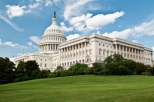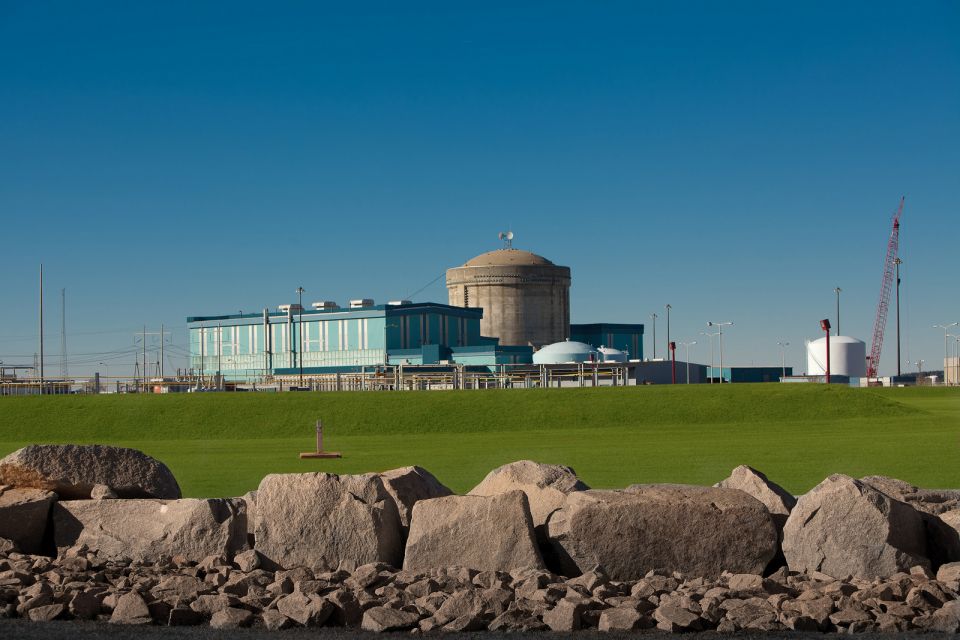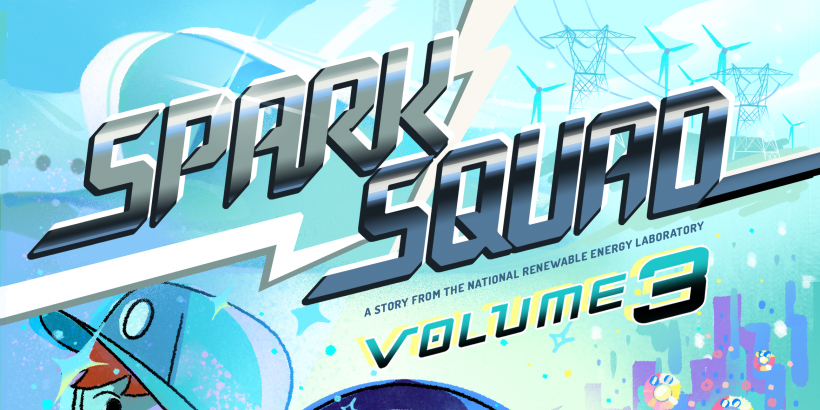Good and bad news stories for nuclear 2011/2012
 After giving a brief update on recent Fukushima-related events in the United States, I'd like to talk about some good (but relatively unpublicized) things that have happened during what has otherwise been a very challenging year for the nuclear industry. Then I'll discuss what, to me, was the most disconcerting story in the past year.
After giving a brief update on recent Fukushima-related events in the United States, I'd like to talk about some good (but relatively unpublicized) things that have happened during what has otherwise been a very challenging year for the nuclear industry. Then I'll discuss what, to me, was the most disconcerting story in the past year.
NRC response to Fukushima
The Nuclear Regulatory Commission published a series of new requirements for U.S. nuclear plants, as a result of its evaluation of the Fukushima event. Requirements include seismic evaluations and upgrades (if necessary), the addition of portable pumps and generators (sited at multiple, protected locations), and enhanced monitoring capability for spent fuel pools. For many older boiling water reactors, hardened vents may be required (if not already in place). Another requirement being discussed is the ability to maintain operations (and cooling) without off-site power indefinitely (as opposed to the current requirement of 4-8 hours).
During Senate testimony, NRC Chairman Jaczko and other commissioners appeared to disagree over the amount of time that will be required for plants to make the proposed changes. Jaczko stated that some of the changes are likely to take until 2017-2019 (something that he said he was "concerned" about), whereas other commissioners thought that the changes will be in place by 2016.
Good news in 2011/2012
We're all aware of the fact that the final NRC licenses were finally granted for construction of the new Vogtle reactors. It is also true that the project is within budget and schedule so far. Some lesser-known bits of good news are discussed below.
NRC Accident Consequence Statement
 This is one potentially very positive thing that happened for the industry recently, without much publicity or fanfare. In part as a result of its evaluation of Fukushima, the NRC released a position statement concerning the potential consequences of (even worst case) nuclear plant accidents. The NRC (finally) acknowledged what many of us have known for a long time. It stated that the risk to public health, even from a severe accident, is "very small". It also stated that the risk of short-term fatalities from acute exposure was "essentially zero," and that the scenario of a large amount of radiation being released very quickly
This is one potentially very positive thing that happened for the industry recently, without much publicity or fanfare. In part as a result of its evaluation of Fukushima, the NRC released a position statement concerning the potential consequences of (even worst case) nuclear plant accidents. The NRC (finally) acknowledged what many of us have known for a long time. It stated that the risk to public health, even from a severe accident, is "very small". It also stated that the risk of short-term fatalities from acute exposure was "essentially zero," and that the scenario of a large amount of radiation being released very quickly
(thus requiring a rapid evacuation) was unrealistic.
This is probably as close as we're going to get to a formal retraction of the earlier analyses/assumptions that formed the basis of emergency response planning over previous decades. These grossly unrealistic analyses predicted thousands of immediate deaths from acute exposure, followed by tens of thousands of long-term cancers. Chernobyl had already shown those analyses to be completely unrealistic, and (I suppose) Fukushima, with its complete lack of health impacts, was the final nail in the coffin.
But, alas, I suppose I'm being unrealistic in hoping that this could lead to some relief with respect to emergency planning requirements. Indeed, many seem to be drawing precisely the reverse conclusion, asking whether evacuation zones should be increased (never mind that many other facilities that are actually more dangerous, such as chemical plants, oil refineries, etc., do not have similar evacuation zones).
This is a shame, given that these evacuation zones/plans have always been an albatross around the industry's neck that has been used relentlessly by nuclear opponents (e.g., the Shoreham plant). They always argue about how rapid evacuation may not be practical. Well, we've just (finally) realized that it's not necessary!
Fukushima also showed that, even with respect to longer-term impacts, significant effects of even a worst-case meltdown do not extend beyond ~20-25 miles of the plant (in any direction). And yet we still hear people talking about populations as far as 50 miles from plants (e.g., New York City from the Indian Point plant).
Clean Energy Standard Legislation
 The Senate Energy Committee finally released a detailed legislative proposal for a Clean Energy Standard. The final proposal is the result of many years of analysis and negotiation. While it is unlikely to pass (or be considered) this year, it is considered more likely to pass than other options such as comprehensive global warming legislation. It has the potential support of several moderate Republicans.
The Senate Energy Committee finally released a detailed legislative proposal for a Clean Energy Standard. The final proposal is the result of many years of analysis and negotiation. While it is unlikely to pass (or be considered) this year, it is considered more likely to pass than other options such as comprehensive global warming legislation. It has the potential support of several moderate Republicans.
The good news is that the final details of the legislation appear to be rational and even-handed, and fairly good for the nuclear industry. The Standard requires that 85 percent of U.S. electricity generation be from "clean" sources by 2035. While the final version does allow partial credit for fossil sources like gas, the amount of partial credit scales (inversely) with the level of CO2 emissions (relative to a coal plant). Thus, non-emitting sources like nuclear would retain a significant advantage over gas, particularly in the later phases of the program (when an all-gas generation profile would no longer be able to meet the requirements).
SMRs Move Forward
The U.S. Department of Energy recently decided to provide $452 million in funding for licensing of small modular reactors (SMRs), over the next five years. The DOE is also making plans to host three SMR demonstration projects on the Savannah River Site. The three selected reactors are the 45-megawatt (MW) NuScale Pressurized Water Reactor (PWR), the 25-MW Gen4 Energy fast reactor, and a 140-MW PWR reactor from Holtec.
Hopefully, construction of the prototypes will speed the technological development of these reactors, although NRC licensing should occur in parallel. Use of the Savannah River complex may make siting these prototype reactors easier, which could speed licensing and deployment.
A New Low Level Waste Site (at last)
The Waste Control Specialists' low level waste (LLW) site in Texas (near the New Mexico border) will soon begin operation. The site will take waste from 38 states. It will handle all types of LLW, including Class A, B, and C. Given the closure of the Barnwell site to out-of-compact waste, the Texas site is now the only site that accepts all classes of LLW from most states.
This represents a significant victory, given the level of difficulty the nation has had in siting new LLW disposal facilities, anywhere, for many decades. This is the first site to open in 30 years. For some time, the political task of opening new LLW sites was thought to be intractable.
It should also be noted that within the same general area (in southeast New Mexico), the local communities around the DOE's WIPP repository are actively seeking to host the nation's spent fuel and high-level waste as well. There is some indication that the state government is willing to consider the option.
Sanity Prevails in France
The French government recently released a new long-term energy options evaluation that concludes that the most economical and practical option is to extend the operating life of its existing reactor fleet from 40 years to 60 years.
In the past, French policy had always appeared to be to replace its reactors with new ones after ~40 years of life. Given the long-standing position in the United States that light water reactors (LWRs) could be run safely for 60 or more years, I've always found the (old) French position to be puzzling. I wondered if it was, in part, just a means of creating extra work to keep its domestic industry employed and on top of its game, similar to U.S. Depression-era make-work programs.
In any event, it seems like they've finally come to their senses. Any new nukes should be used to increase, not maintain, capacity (i.e., be used to replace fossil fuels). The cost savings will be enormous. Perhaps this new position is partly a result of Fukushima. With political support for new reactor construction much lower, perhaps the French government concluded that the only way their nuclear capacity would be maintained would be through extended operation.
The biggest bad news story of 2011/2012
Despite the positive news stories discussed above, my level of optimism for nuclear's future was deeply shaken last year, not by the Fukushima event itself, but by the public/media/political reaction to it, particularly in Japan.
Here in the United States, Fukushima is somewhat less significant. Polls show only small reductions in public support. New nukes remain highly popular in most regions/locations where new reactors are being considered. Also, in the United States, several other factors, including the lack of any global warming policies on the horizon, the fact that the economic downturn suppressed future power demand growth, and low natural gas costs due to the shale gas "miracle," loom larger over nuclear's future.
In the rest of the world, however, Fukushima has had a surprisingly large impact on public opinion in many, if not most nations. In addition to Japan and Germany, anti-nuclear opinion has surged in other nations with strong nuclear programs, such as France and South Korea. The reaction in Germany does not surprise or upset me much. They are merely returning to their usual long-standing anti-nuclear position (with the 2022 nuclear phase-out date actually being two years later than a long-standing 2020 phase-out date). I was (and am) utterly dismayed, however, by the public/political reaction in Japan.
Japanese Reaction
If one asks the question of how big a natural disaster (e.g., earthquake) a nuclear plant should be able to take, the rational answer is clearly not "infinite." One quite reasonable answer given by many people is that the disaster should be sufficiently large that if it did occur, a meltdown would be the least of their problems. One would think that Fukushima would be a textbook case of this, with ~20,000 deaths from the earthquake and tsunami, no immediate deaths from the meltdown, and few if any projected future deaths. It is also true that the number of evacuees and lost homes due to the earthquake and tsunami is larger than that from the radiation release.
But then, we watched in horror as the world's attention (media, etc.) focused mostly on the plant meltdown, as opposed to the earthquake and tsunami. Not only were the enormous impacts of the earthquake and tsunami (deaths, etc.) deemed less newsworthy than the plant meltdowns, but so were the vastly larger ongoing health and environmental impacts of fossil fuel generation. Apparently, such logical thinking on our part does not adequately consider various psychological and political factors.
According to the World Health Organization, fossil-fueled power generation causes hundreds of thousands of deaths, worldwide, every single year (i.e., on the order of 1000 deaths every single day). Even conservative estimates, based on the pessimistic linear-no-threshold assumption, predict less than ~1000 eventual deaths from Fukushima. Thus, in terms of health impacts, worldwide fossil fuel power generation is having an impact equal to (or worse than) having a Fukushima event occur every single day. And that's before considering global warming.
 Despite these facts, the people of Japan, and their political leaders, are apparently ready to shut down their nuclear plants and replace them with vastly more dangerous and harmful fossil fuel generation. They are willing to do this even through it will mean greatly increased air pollution and CO2 emissions, and will have a devastating effect on their economy. Japan has always had an export-driven industrial economy with large trade surpluses. For the first time in memory, however, Japan will be running a trade deficit, primarily due to the increased fossil fuel imports that are necessary to replace their nuclear generation. In addition to horrendous health and environmental impacts, the fossil generation will result in markedly higher power costs. Many of Japan's heavy industries have threatened to move off-shore.
Despite these facts, the people of Japan, and their political leaders, are apparently ready to shut down their nuclear plants and replace them with vastly more dangerous and harmful fossil fuel generation. They are willing to do this even through it will mean greatly increased air pollution and CO2 emissions, and will have a devastating effect on their economy. Japan has always had an export-driven industrial economy with large trade surpluses. For the first time in memory, however, Japan will be running a trade deficit, primarily due to the increased fossil fuel imports that are necessary to replace their nuclear generation. In addition to horrendous health and environmental impacts, the fossil generation will result in markedly higher power costs. Many of Japan's heavy industries have threatened to move off-shore.
Double standard forever?
These reactions, in Japan and elsewhere, are leading me to believe that there is a deeply-ingrained prejudice against nuclear power as a means of power production; one that may never disappear. Whether it is the legacy of the bomb, or is due to enormous media/political influence of the world fossil fuel industry (who knows?), the fact is that minor impacts from nuclear are given far more attention, and are far less tolerated, than far larger impacts from fossil fuels and other technologies.
The double standard is also alive and well in the United States. Not only has the U.S. nuclear industry accepted the NRC's new requirements without significant resistance, but they've even proactively pursued improvements on their own, without being legally required to do so. And yet, in congressional hearings
and elsewhere, many are not satisfied with the rate or amount of improvement,
saying that having to wait over five years is an unacceptable risk. Meanwhile, old "grandfathered" coal plants in the United States are still not meeting the requirements of the 1970 Clean Air Act, the result being tens of thousands of annual deaths. Despite the fact that the public health risks in question are orders of magnitude larger in the coal plants' case, apparently taking over 40 years is okay for them, whereas five years is too long for nuclear's Fukushima upgrades.
Nuclear has always been held to standards thousands of times as strict (in terms of dollars spent per life saved, etc.) than fossil fuels. Before Fuksushima, with all the attention being paid to global warming, I had thought that the playing field might start to become somewhat more balanced. Now, after Fukushima, nuclear requirements are becoming even more strict (with any notions of regulatory relief being put to bed), whereas attempts are now being made (in the United States, anyway) to reduce regulations/requirements on fossil fuels even further. Humble requests to reduce air pollution and/or CO2 emissions are met with calls to eliminate the Environmental Protection Agency.
Thus, the spectacularly unlevel playing field will likely get even more unlevel. The Clean Energy Standard is the only hope left out there.
Our industry seems all too eager to accept unprecedentedly stringent requirements, for love of the engineering challenge, apparently. The most pertinent example is the acceptance of radiation dose rate limits (e.g., 100 mrem/yr) that are orders of magnitude lower than the levels for which any significant health impacts are seen. The fact is, in my view, that NO technology can survive (over the long term) while being on the receiving end of an enormous double standard (i.e., under a tremendously non-level playing field). Better technology (e.g., SMRs, etc.) is not the answer. We must ask ourselves what we can do to get policies enacted that will level the regulatory playing field, and how we can reduce the tremendous prejudice that society has against our technology. I have several thoughts on those issues, but I've run out of space for this column...
____________________

- Hopf









